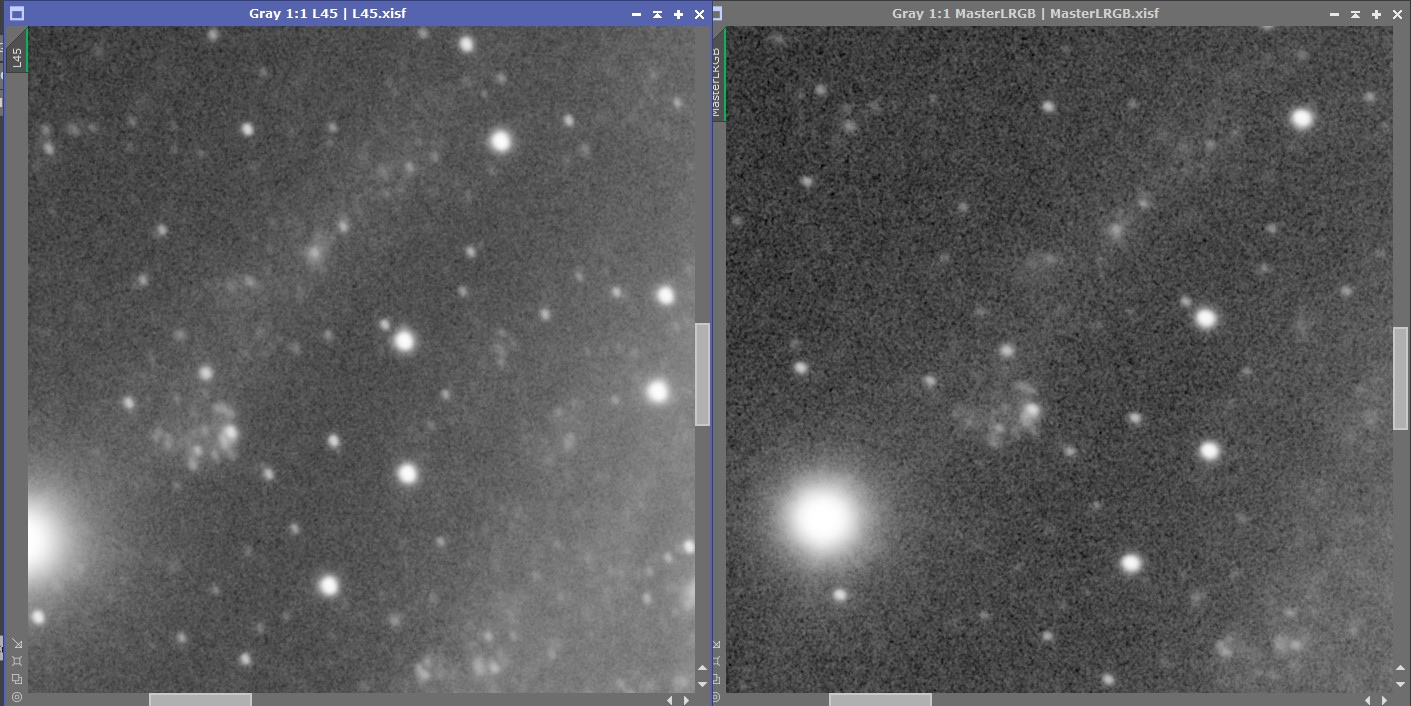Hi folks,
I fell upon the Pseudoluminance concept in the "Inside Pixinsight V2" book (which refers to Juan Conejero's message on this forum :
https://pixinsight.com/forum/index.php?topic=6042.msg41031#msg41031) and I am puzzled with the results I have...
According to the message, I opened ImageIntegration, added all my files (cf infra) and tried many parameters :
- Combination = Average
- Normalization = additive with scaling (but every other paramater)
- Weights = Noise evaluation (and SSWEIGHT as explained on Light Vortex)
- Scale estimator = iterative k-sigma
- Generate integrated image = enabled
- Evaluate noise = enabled
- Pixel rejection = No rejection (this was the worst, so I switched to rejection and Linear Fit Clipping)
- Clip low range = disabled
- Clip high range = disabled
JFI, here is the setup : C11 EdgeHD plus focal reducer x0.72 in Nerpio in Spain. I am imaging with a ATIK 4000 MM and CCD Baader filterset
In the same night, I acquired 52L, 30R, 30B 15G of 150s Bin 1x1 exposures. I kept only 45L b/c of an excentricity > 0.7.
So I tried to "mix" the datasets into 2 processes :
- "LRB" with 45L12R12BsyntheticG : 69 subs
- "RGB" trying to integrate 30B30R12G in a pseudoluminance : 72 subs
You can see the results here :
RGB process :
LRB process :
As you can, see the LRB result has much more signal in the periphery of the galaxy arms, which would mean that 30R+15G+15B (ie 72 subs) IS NOT equal to 45L+12R+12B+SyntheticG (ie 69 subs) (more exposure, but less signal)
So I integrated all the images (45L30R30B15G) in a Superluminance. The result is almost equal (with even a bit less signal) to the integration of 45L only
on the left, integration of 45L subs. On the right, integration of 117 (!) subs (45L30R12G30B)

I have less noise, but a bit less signal too...
So my question is : how do I integrate L, R, G and B (or R,G and B) to get a real "addition" of the signal ?
Obviously, something (me) is getting wrong

Thanks in advance for the help
